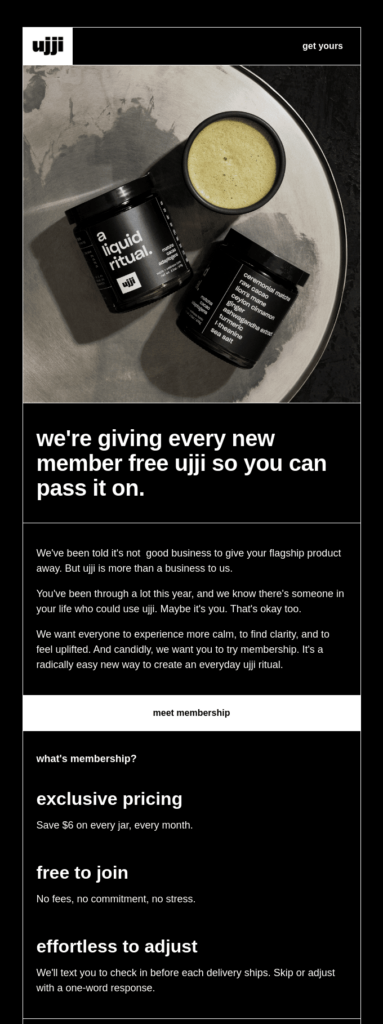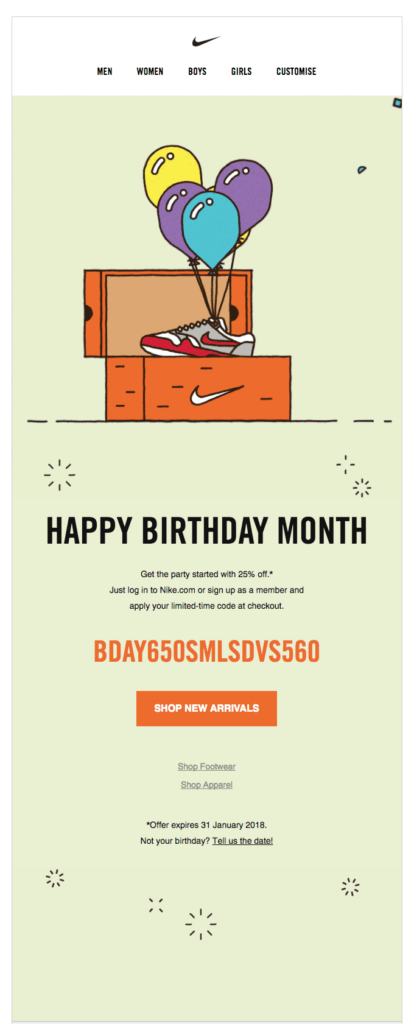Marketing automation is a lifesaver for time-strapped teams. It can also help build better customer relationships, boost conversions, and increase revenue. Here are 7 marketing automation examples that can help your business become more efficient.
But first, let’s go over some key terminology…
Understanding marketing Automation
What is automation?
Automation is the use of technology to complete manual tasks without human intervention based on a set of rules or conditions. These automations have an “if/then” structure, meaning if a certain condition is fulfilled then an action will occur.
In a marketing context, an automation involves the following elements:
- Different touchpoints in the customer lifecycle, such as when they visit your website or contact your customer service
- The conditions or triggers for steps within the automation, which may be a customer characteristic or behavior
- The actions automatically triggered by such conditions, like sending a subscriber an email or adding them to a list

If this all sounds a bit complicated not to worry. Brevo’s marketing automation software offers a range of ready-to-use automation templates for common scenarios.
Now, let’s explore some of the best marketing automation and how you can put them into practice.
7 Marketing Automation Examples and Why They Work
Here are some examples of how your marketing team can use automation to boost results, build relationships, and increase engagement.
Automation can play a crucial role in your relationship marketing strategy. It not only helps you to secure new customers but also to ensure they remain loyal to your brand in the long term.
1. Welcoming subscribers
An effective welcome email is a must for new subscribers to content like your newsletter. This simple email automation example shows your audience you care and lays the foundation for a lasting relationship.
Why it works:
- Reinforce or provide more insight into your unique value proposition, highlighting what sets you apart.
- Establish clear expectations for your subscribers, outlining the benefits they can anticipate from your content and the frequency of communications.
- Extend a warm welcome to new subscribers, offering them a glimpse into the unique personality of your community.
- Delight subscribers with a pleasant surprise, such as a store coupon or an immediate download of bonus content, fostering a positive and engaging initial experience.

2. Offering gated content
Lead generation is never a one-way street. If you want information from your prospective customers, you need to give them a reason to share it!
Why it works:
You provide something valuable to users, such as a downloadable ebook or a webinar. And in exchange they provide useful information like their name, company, email address, and other contact details.
Gated content is particularly effective as a lead generation tactic because it attracts people who are likely to be interested in your offer. A well-crafted automation can help you capitalize on this.
3. Lead nurturing
As the above example demonstrates, marketing automation can make nurturing new leads easier and more effective. After automatically sending subscribers the content they signed up for, you can nurture leads by following up with more content tailored to their interests.
Why it works:
- Guide potential customers toward conversion. Maintain customer engagement throughout their research and shopping process.
- Provide prospects with the relevant information they need to make a purchase.
4. Getting Feedback
Customer feedback is a valuable tool not only for improving your service or product but also for building trust. Automation also makes collecting feedback and gauging customer satisfaction much easier!
Why it works:
- Add satisfied customers to a loyal list so they receive exclusive offers and discounts to foster continued loyalty. It also gives you an opportunity to request reviews for broader positive exposure.
- Address unhappy customers by sending a personalized thank-you message, understanding their concerns, and offering resolutions such as refunds or discounts for a proactive customer service approach.

5. Onboarding series
Onboarding emails are an important tool for encouraging customers to stick with your company. You can send these automated emails following an account creation or after a customer purchases your product or service.
When a user creates an online account, there are usually several steps they must take to complete the process. There are also things they must learn to be able to get the most out of their account. Your onboarding series can address some of these issues for a smoother customer experience.
Why it works:
- Increase customer engagement with your products or services and improve retention rates.
- Identify low-engagement users or those who have not properly set up their account for further outreach campaigns.
Tips: Optimizing your email timing and monitoring whether recipients completed the last key action is essential. This ensures users receive value from your onboarding emails and reinforces that your brand is there to help.

6. Celebrating birthdays or anniversaries
Give your customers the VIP treatment by automatically sending them a special discount for their birthday or the anniversary of when they became a customer.
With this contact data, you can then create an automation that sends a message to their customers on the same date each year.
If the customer doesn’t redeem their promotion, you could also trigger a reminder to be sent after a certain period of time.
Why it works:
Personalized campaigns like this are a great way to build loyalty and keep your brand top of mind. Plus they give customers an incentive to buy from your company again or maintain their subscription.

7. Re-engaging subscribers
If you want to combat low engagement with your content or product, a re-engagement automation is the way to go.
Why it works:
- Rebuild relationships with unengaged email subscribers by asking if they still want to hear from you.
- Prevent lost sales by luring customers back with a discount on their next purchase.
- Reactivate users who haven't logged in or used your product in a while.

Bonus tip: you can also use re-engagement emails to clean your list of contacts who are no longer interested. Add a step to your automation so that if a contact doesn’t engage with your “last chance” message asking them to re-opt in, they are automatically removed from your list.
Start Building Your Own Marketing Automation
Hopefully these automation examples have inspired you to take action! And if you’re looking for a solution to get started with marketing automation, why not give Brevo a try? We have plans tailored for businesses of all sizes.
You’ll get ready-to-use automations, customizable segments of customers to target, and a flexible automation builder that lets you use any event as a trigger.






